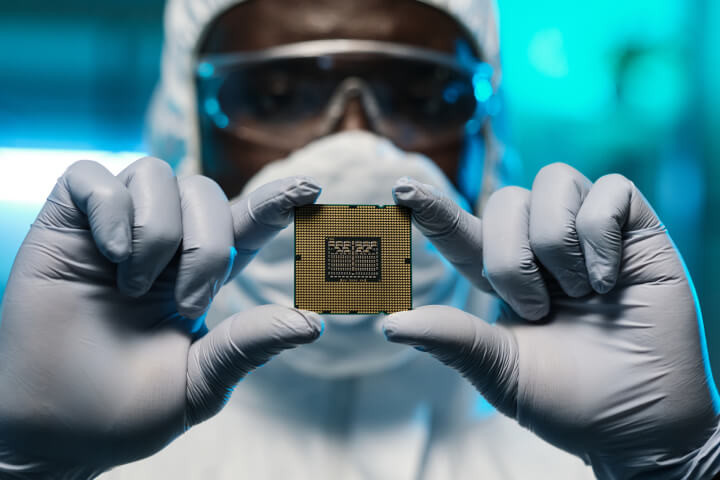Future Semiconductor Workforce: SIA's Detailed Policy Guide
Buyer News | 18-04-2024 | By Jack Pollard

The semiconductor industry, central to the modern electronics market, relies heavily on the expertise of its workforce. Skilled professionals in this field are crucial for maintaining the pace of advancements and meeting the growing demands for electronics components across various sectors. The Semiconductor Industry Association (SIA) plays a vital role in this ecosystem, advocating for policies that ensure the industry continues to thrive and expand. As the driving force behind innovations that power everything from consumer electronics to critical infrastructure, the development of a robust semiconductor workforce is essential for sustaining industry growth and competitiveness.
Overview of the Workforce Challenge
The semiconductor industry is currently at a crossroads when it comes to workforce development. As of now, the sector employs approximately 345,000 workers across the United States. However, this figure is set to rise sharply due to increased demand for semiconductor products in various applications within the electronics industry.
According to the "Chipping Away" report released by the SIA, the industry is projected to add 115,000 more jobs by the year 2030. This expansion represents a significant opportunity but also a substantial challenge, as there is an expected shortfall in the number of skilled workers available to fill these positions. The report estimates that 67,000 of these new roles, particularly those requiring specialised technical skills such as technicians, engineers, and scientists, may remain vacant. This gap not only highlights the urgent need for targeted workforce development strategies but also underscores the potential risks to the industry’s growth and the broader electronics market if these roles are not filled.
SIA’s Workforce Policy Blueprint: Key Proposals
In response to the looming workforce challenge, the Semiconductor Industry Association (SIA) has crafted a Workforce Policy Blueprint, a strategic document aimed at guiding policymakers on how to nurture and expand the semiconductor workforce effectively. This blueprint adopts a holistic approach, addressing the critical need for skilled labour across multiple levels of expertise and education within the semiconductor and broader electronics industries.
Federal Funding for Science and Engineering Education: The blueprint emphasises the necessity for increased investment in science and engineering education. By advocating for enhanced federal funding for research institutions and educational bodies, the SIA aims to ensure a continuous supply of highly trained engineers and scientists. This funding is crucial for advancing research and development initiatives that are fundamental to semiconductor manufacturing and innovation.
Immigration Policy Reforms for High-Skill Individuals: Recognising the global nature of the talent pool, the blueprint suggests reforms in immigration policies to attract and retain the world’s top talents in science and technology. These reforms would facilitate easier access for skilled individuals to enter and contribute to the U.S. semiconductor industry, thereby alleviating immediate shortfalls in critical areas of expertise.
Expansion and Standardisation of Workforce Training Programs: To bridge the gap between educational outcomes and industry needs, the SIA recommends the expansion of high-quality workforce training programs. These programs should not only be more accessible but also standardised across the board to ensure consistency and relevance of the skills being taught. Standardisation would also help in recognising prior learning and experiences, making it easier for individuals to transition into roles that require specific technical competencies.
Policies to Make STEM Education More Accessible and Affordable: Lastly, the blueprint outlines measures to reduce financial barriers that often prevent talented individuals from pursuing careers in STEM fields. These policies include scholarships, grants, and other financial support mechanisms aimed at both students and educational institutions. By making STEM education more accessible and affordable, the SIA hopes to expand the pipeline of future semiconductor professionals, ensuring the industry's growth and sustainability.
Together, these recommendations form a robust framework for developing the semiconductor workforce, ensuring that the industry can meet future demands and maintain its critical role in the global electronics market.
Impact on Various Stakeholders
The policy recommendations outlined in the Semiconductor Industry Association's (SIA) Workforce Policy Blueprint hold significant implications for a variety of stakeholders within the economy. These policies are designed not only to bolster the semiconductor industry but also to enhance the broader ecosystem of electronics manufacturing, research, and development.
Economic Growth and Sector-Wide Benefits: By increasing federal funding for science and engineering education and expanding access to STEM education, the blueprint supports a foundational shift towards a more knowledgeable and technically proficient workforce. This shift promises to drive innovation across various sectors including telecommunications, automotive, and consumer electronics, all of which rely heavily on semiconductor technologies. The enhancement of workforce capabilities can lead to more efficient production processes and the faster development of new technologies, contributing to overall economic growth.
Boost to Innovation: The proposed immigration reforms aim to attract top-tier talent to the U.S. semiconductor industry. By bringing in the best minds from around the world, these policies would accelerate innovation, leading to advancements in semiconductor design and manufacturing processes. The influx of global talent can foster a more dynamic exchange of ideas, propelling the U.S. to the forefront of technological innovation and sustaining its position as a leader in the global electronics market.
Enhanced Technological Leadership: The standardisation of training programs and the alignment of educational outcomes with industry needs are critical in maintaining the U.S.'s competitive edge in technology. These initiatives ensure that the workforce is not only large enough to meet industry demands but also possesses the specific skills required to operate and innovate at the cutting edge of technology. This is particularly crucial as the semiconductor industry moves towards more sophisticated technologies such as AI-driven processes and quantum computing.
Inclusivity in Tech: Furthermore, by making STEM education more affordable and accessible, the blueprint addresses the issue of inclusivity in the tech sector. Policies aimed at financial barriers reduction can diversify the talent pool, bringing more underrepresented groups into the semiconductor and electronics industries. This diversity can lead to richer innovation and a more robust, resilient industry.
In conclusion, the implementation of SIA's Workforce Policy Blueprint could significantly benefit various sectors of the economy by enhancing the supply of skilled workers, driving technological innovation, and reinforcing the United States' leadership in the global market. The collective impact of these policies would not only address the immediate challenges facing the semiconductor industry but also lay down the foundations for sustained economic growth and technological advancement.
Industry and Government Collaboration
The successful implementation of the Semiconductor Industry Association's (SIA) Workforce Policy Blueprint hinges on effective collaboration between the public and private sectors. This partnership is crucial for aligning the strategic interests of the semiconductor industry with national policy goals, ensuring that the measures proposed in the blueprint translate into tangible benefits for the industry and the broader economy.
Importance of Collaboration:
Collaboration between industry leaders and government bodies is essential for creating a conducive environment for the semiconductor workforce to flourish. The private sector, with its firsthand understanding of the industry's needs and challenges, can provide valuable insights that shape more effective and practical policy measures. Meanwhile, the government can facilitate the necessary legislative and financial support to implement these policies, ensuring they are adopted widely and benefit a broad range of stakeholders.
Examples of Potential Collaborations:
-
Joint Funding Initiatives: One potential collaboration could involve joint funding for research and development projects. These initiatives could be targeted at emerging areas in semiconductor technology, such as next-generation chip manufacturing, where advancements could have a broad impact across multiple sectors. For instance, public funds could be matched with private investment to support university-led research that feeds directly into industry applications.
-
Workforce Development Programs: Another example is the development of co-sponsored training and certification programs. These programs, designed in consultation with industry players, could be administered through community colleges or vocational schools. They would offer standardised training that meets industry specifications, with curricula developed to reflect the latest technological advancements in the semiconductor field.
-
Policy Roundtables: Regular roundtables involving policymakers, industry executives, and academic leaders could be established to discuss ongoing workforce needs and the effectiveness of current policies. These forums would provide an opportunity for continuous dialogue and adjustment of strategies in response to new developments and challenges in the semiconductor industry.
-
Incentives for Private Sector Training Initiatives: The government could offer tax incentives or subsidies to semiconductor companies that invest in employee training and development. This would encourage more firms to undertake such initiatives, helping to close the skills gap more rapidly.
-
Targeted Immigration Reforms: Collaborative efforts could also focus on tailored immigration reforms that facilitate the entry and retention of high-skilled workers specifically for the semiconductor industry. These reforms could include fast-track visa processing for certain roles that are critical to the industry, developed through consultations between government immigration services and semiconductor companies.
By working together, the public and private sectors can ensure that the workforce policies are not only visionary in scope but also grounded in practicality and responsiveness to the industry’s immediate and long-term needs. This collaborative approach is pivotal for sustaining innovation and maintaining the competitiveness of the U.S. semiconductor industry in the global market.
Conclusion
Addressing the workforce challenge in the semiconductor industry is not merely a matter of filling job vacancies; it is a critical strategy for sustaining innovation and securing the economic and technological leadership of the United States in a highly competitive global market. The Semiconductor Industry Association's (SIA) Workforce Policy Blueprint offers a comprehensive roadmap to meet this challenge head-on, with policies designed to bolster the education, training, and recruitment of a skilled workforce adept in the latest semiconductor technologies.
The significance of these efforts extends beyond the immediate benefits of increased employment and reduced skill gaps. The strategic development of a highly skilled workforce is fundamental to driving forward the innovations that define and dominate the next generation of semiconductor technology. Skilled workers are the architects of advancement in this field, pushing the boundaries of what is possible in electronics, and enabling breakthroughs that permeate a wide array of industries, from consumer electronics to critical national infrastructure.
In conclusion, the role of these skilled workers cannot be understated. They are the cornerstone upon which the U.S. can maintain and expand its technological supremacy. As such, the collaborative efforts of the public and private sectors in implementing the recommendations of the SIA's blueprint are crucial. By investing in the future of its workforce, the U.S. not only enhances its position on the global stage but also secures a prosperous future where innovation continues to drive economic growth and technological excellence. The journey towards this future begins with a commitment to nurturing and empowering the very individuals who will lead this charge—our skilled semiconductor workforce.

